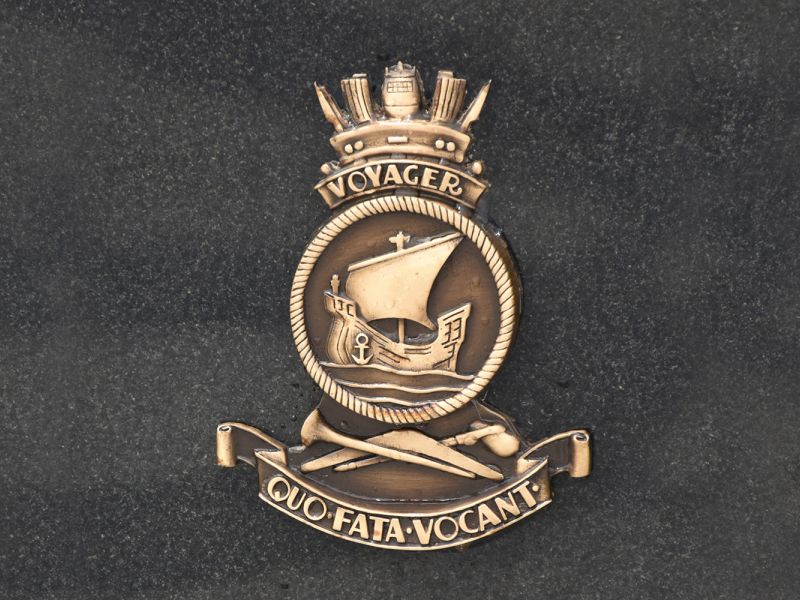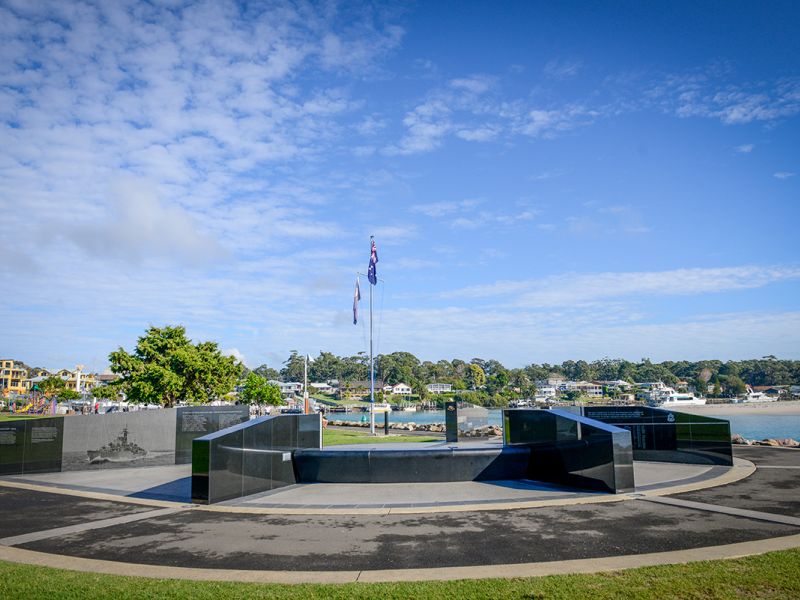Quo Fata Vocant - We Go Where Destiny Calls
Memorials across Australia record the names of those who have lost their lives in times of war and on operational service. Some memorials also record names that are tragic evidence that even peacetime service is hazardous. So records the memorial in Voyager Memorial Park. Listed on the memorial are the names of 82 men lost in Australia’s worst peacetime naval disaster.
On the night of 10th February 1964, the aircraft carrier HMAS Melbourne (II) was conducting night flying exercises off the east coast of Australia, in company with the Daring class destroyer HMAS Voyager (II). Voyager’s role was that of plane guard, ready, if necessary, to rescue aircrew from the sea. Shortly before 9 pm, south east of Jervis Bay, Voyager crossed ahead of the carrier and the two ships collided. Melbourne struck Voyager at the aft end of her bridge. Debris from Voyager's bridge was thrown onto Melbourne's flight deck. The destroyer broke in two. The forward section sank soon afterwards, the after section about three hours later.
Eighty-two personnel in Voyager were lost, including a civilian dockyard worker. Despite the confusion created as the ship sank in the darkness, many men demonstrated the highest standards of courage and gallantry, resulting in the salvation of many who would otherwise have perished. Twelve men were recognised for their gallantry, three of them having lost their own lives whilst saving others.
Chief Petty Officer Jonathan Rogers, a decorated Second World War veteran, was the ships Coxswain. The senior sailor on board, he was responsible for the 'good order and discipline' of the ship's company. Following the collision Rogers took charge of the situation and began directing men to escape exits in other compartments. He calmed terrified shipmates as he attempted to control the flooding. Eventually, when it was obvious that he and some of his shipmates would not get out in time, he led them in prayer and a hymn, 'encouraging them to meet death' beside him 'with dignity and honour'. He was posthumously awarded the George Cross.
The Albert Medal for Gallantry in saving life at sea can only be awarded posthumously. Two members of HMAS Voyager’s ship’s company received the award for their heroic actions after the collision. Midshipman Kerry Marien, along with others, managed to get clear of Voyager’s aft section and into a life raft. When he noticed other survivors in difficulty in the water, Marien re-entered the water to render assistance. A survivor saw him swim towards the rapidly-sinking forward section and he was not seen again. The award recognises his sacrifice in attempting to save the lives of others. His medal is currently on display in the museum at HMAS Creswell, Jervis Bay, NSW.
Electrical Mechanic William Condon was awarded the Albert Medal for remaining at his post in the sinking ship to the end, holding an emergency lantern to show others the path to the escape scuttle.
These three men and their shipmates had truly, as the ship’s motto says, gone where destiny calls.
- Royal Australian Navy website https://www.navy.gov.au/hmas-voyager-ii

 Henry C Moulds
Henry C Moulds